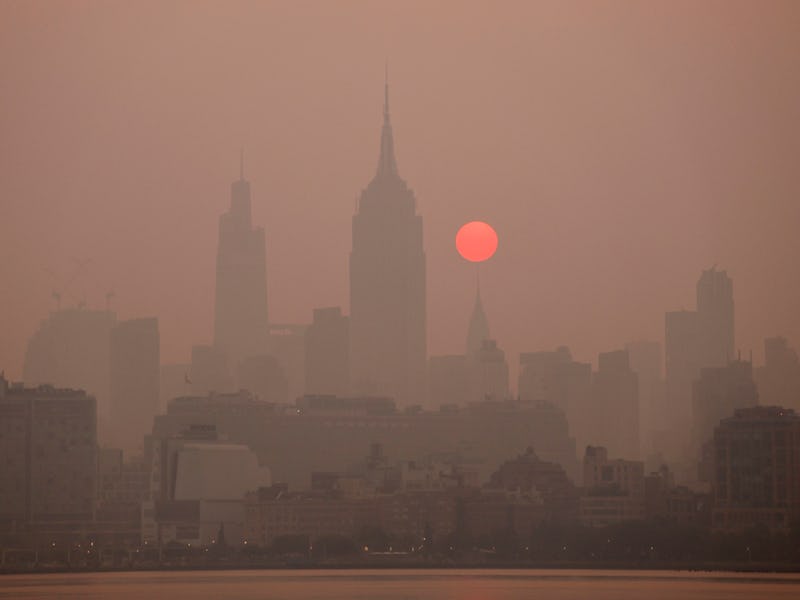Can I Exercise in Poor Air Quality? Here's What's Safe — and Dangerous — To Do Right Now
Even if the haze clears, air quality could still be dangerous.

If you live in the northeast or have been following the news, you may have noticed an eerie pall of haze hanging in the air. This uncanny glow is wildfire smoke that blew in from Canada. While pollution is nothing new to cities, air quality has reached historically bad, even dangerous levels that many people living in these areas have yet to experience. The best way to deal with these conditions is to stay indoors, windows shut.
Can I exercise outside when the air quality is bad?
The warm weather makes outdoor activity enticing, but exercising in these conditions could do serious harm.
The air quality index (AQI) is a good indicator of whether it’s safe to go outside. The higher the index score, the worse the air quality is. The Environmental Protection Agency bases this score on the prevalence of ground-level ozone, particulate matter, carbon monoxide, sulfur dioxide, and nitrogen dioxide.
For people with no chronic conditions, orange or lower signals that it’s alright to venture out. AirNow.gov monitors air quality based on location.
However, if the air quality index lowers to a lesser threat risk — say, orange — exercise for you (and your pet) can be good, as long as you’re both healthy.
What if I have to go outside?
If you must venture out, wear a mask. It’s not as effective against particulate matter as it is against the Covid-19 virus, but it can filter out 95 percent of smoke particles. However, it won’t get rid of the smell of the smoke, so if you can still smell smoke, it doesn’t mean the mask isn’t working. A secured N95 mask is the best option, and while bandanas and scarves worked in a pinch during the worst of the pandemic, they’re largely ineffective against air pollution.
What are the risks of going out?
According to the Centers for Disease Control (CDC), those with asthma and other lung or heart disease are vulnerable because the particulates in the air trigger inflammatory responses in the lungs while suppressing the cells that counteract inflammation.
Older adults are more susceptible to harm because of their increased risk for heart and lung diseases. Still-developing airways in children can suffer worse damage from the same air, especially since kids breathe more air per pound of body weight than adults.
Those who are pregnant also risk permanent damage because of how their bodies are changing. Effects from smoke can increase the risk of preterm birth and low birth weight. Other consequences of exposure to particulate matter can lead to heart attacks, decreased lung function, coughing, and airway irritation.
Am I safe indoors?
Depending on a building’s insulation, indoor particulate levels may be about half of what floats around outside. Avoid stovetop frying or grilling, which increases indoor pollution (especially from a gas stove). Burning candles and fireplaces pollutes clean air as well, as does smoking. Vacuuming also puts particulate matter in a flurry, the CDC says.
Shuttering windows, recirculating air with your air conditioner, and investing in a HEPA air filter or MERV 13–rated HVAC filter over a box fan can further lower indoor air pollution.
The best way to keep up to date on air quality is by monitoring the AQI, and not simply going by the color of the sky. Certainly, the air will clear, even if we don’t know when.